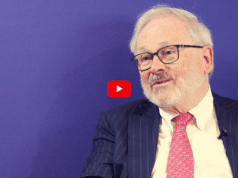 Echocardiographers may be at significantly greater risk of exposure to radiation than interventional cardiologists when performing structural heart procedures in the cath lab, new research published in JAMA Network Open suggests.
Echocardiographers may be at significantly greater risk of exposure to radiation than interventional cardiologists when performing structural heart procedures in the cath lab, new research published in JAMA Network Open suggests.
This was the finding from David A McNamara (Frederik Meijer Heart & Vascular Institute, Grand Rapids, USA) and colleagues, who performed a single-centre, cross-sectional study looking at radiation dosage among interventional cardiologists, echocardiographers and sonographers carrying out a series of left atrial appendage occlusion (LAAO) and transcatheter edge-to-edge mitral valve repair (TEER) procedures.
The study team writes that their data reveal a previously under-recognised occupational exposure risk, that should have “important ramifications” for the rapidly expanding field of interventional echocardiography.
“Given the rapidly increasing rates of LAAO and TEER procedures and progress in the field of interventional echocardiography, steps to quantify the occupational risk of interventional echocardiographers are warranted to help inform mitigation attempts,” the authors of the study note.
McNamara et al measured personal dose equivalents per case at head level recorded using real-time radiation dosimeters during 60 procedures—30 LAAO and 30 TEER—within their centre, carried out from July 2016 to January 2018, and performed using fluoroscopy and transoesophageal echocardiography (TEE) guidance.
The cath lab teams wore traditional lead apparel, consisting of a lead skirt, apron and thyroid collar, and a mobile, height-adjustable accessory lead shield was placed between the patient and the interventional echocardiographer.
Investigators report that the median radiation dose per case was higher for interventional echocardiographers (10.6μSv; IQR, 4.2‒22.4μSv) than for interventional cardiologists (2.1μSv; IQR, 0.2‒8.3μSv; p<0.001).
During TEER, interventional echocardiographers received a median radiation dose of 10.5μSv (interquartile range [IQR], 3.1‒20.5μSv), which was higher than the median radiation dose received by interventional cardiologists (0.9 μSv; IQR, 0.1‒12.2 μSv; p<0.001). During LAAO procedures, the median radiation dose was 10.6 μSv (IQR, 5.8‒24.1μSv) among interventional echocardiographers and 3.5 (IQR, 1.3‒6.3μSv) among interventional cardiologists (p<0.001).
Compared with interventional echocardiographers, sonographers exhibited low median radiation doses during both LAAO (0.2μSv; IQR, 0.0‒1.6 μSv; p<0.001) and TEER (0.0 μSv; IQR, 0.0‒0.1μSv; p<0.001).
According to the researchers, the odds of interventional echocardiographers having a radiation dose greater than 20μSv were 7.5 times greater than for interventional cardiologists. Furthermore, interventional echocardiographers were observed to have median head-level radiation doses that were three-fold greater during LAAO and 11.7-fold greater during TEER than for interventional cardiologists.
“The primary results of this cross-sectional study of occupational radiation exposure indicate that interventional echocardiographers received significantly greater head-level radiation doses than interventional cardiologists during two commonly performed structural heart cases,” McNamara et al write. “In addition, in more than 25% of cases, the interventional echocardiographer received a dose that exceeded 20μSv, which is roughly 10-fold higher than the previously reported mean procedural dose equivalent received by interventional cardiologists across a variety of different procedures.”
The researchers note that the generalisability of the findings is limited due to the single-centre design of the study, as some centres may use different shielding techniques, but they note that additional research is needed to determine optimal approaches to radiation safety among interventional echocardiographers.










